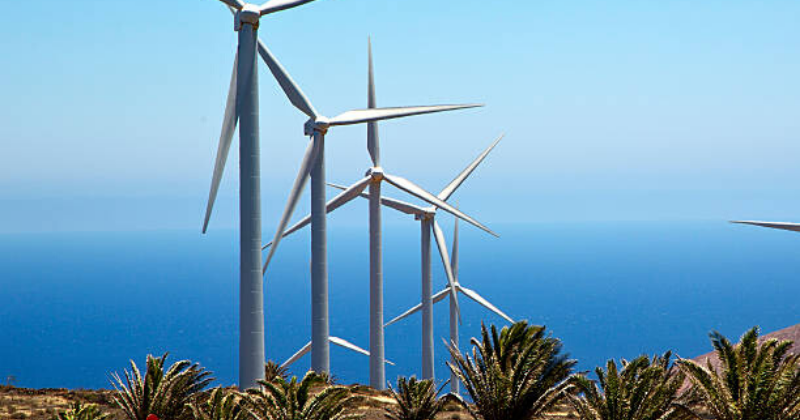No doubt, Kenya offers one of the fastest growing and dynamic markets for renewable energy in Africa. In 2015, the Climatescope Index ranked Kenya 6th out of 55 countries that invest in the generation of renewable energy. The country’s renewable energy flagship projects include the Lake Turkana Wind Power Project which aims to provide 310 MW of reliable, low cost windpower to the Kenyan grid. This is equivalent to approximately 20% of the current installed electricity generating capacity. As the single largest private investment in Kenya, the Project will replace the need for Kenya to spend approximately KES13.7 billion (USD 135 million) per year on importing fuel for electricity generation. Construction of the power plant commenced on 25th October, 2014. 50 MW to 90 MW of capacity will be ready for commissioning in September 2016. It is notable that when fully operational in April 2017, the windfarm will be the single largest one of its kind in Africa.
Smaller windpower projects such as a 90 MW windpower project in Mpeketoni, Lamu County have been proposed. Regulatory approvals have been granted for this KES 20 billion (approximately USD 200 million) project sponsored by Electrawinds, a Belgian company, in partnership with International Finance Corporation and a Kenyan company, Kenwind Company Holdings. In Kajiado County, the Kipeto windpower project is set to generate 100 MW of electricity. The project results from one of the most substantial United States foreign direct investments in Kenya. A Chinese firm was recently contracted to construct the plant at the cost of KES 22.6 billion (approximately USD 223 million). The construction phase has been estimated to be two (2) years.
In addition, SkyPower, the developer and owner of various utility-scale solar photovoltaic energy projects, signed an agreement in July 2015 with the Ministry of Energy and Petroleum for the development of 1 GW of world-class solar projects to be built in four phases in Kenya over the next five (5) years.
Centum Investments, a Kenyan investment company, together with three other foreign firms have also sponsored the construction of the 140 MW Akiira geothermal power plant at a projected cost of KES 30 billion (approximately USD 296 million). The project will be developed in two phases; it is estimated that 70 MW will be connected to the national grid.
The legal and policy framework
The above projects have been facilitated by Kenya’s extensive regulatory framework which supports the growth of Kenya’s renewable energy sector.
The Energy Act, 2006 defines renewable energy to mean “all non-fossil sources including but not limited to biomass, geothermal, small hydropower, solar, wind, sewage treatment and plant gas”.
The Sessional Paper No. 4 of 2004 on Energy, which is the foundational document for energy liberalisation in Kenya, provides for the government to undertake pre-feasibility and feasibility studies on the potential for renewable energy sources and for the packaging and dissemination of information on renewable energy sources to create investor and consumer awareness on the economic potential offered by renewable sources of energy.
The Energy Act, establishes the Energy Regulatory Commission (ERC). The ERC’s key functions include the regulation of production, distribution, supply and use of renewable and other forms of energy. The ambit of its functions covers the protection of interests of consumers, investors and other stakeholder interests. To compound this, the Energy Act obligates the Cabinet Secretary to promote the development and use of renewable energy technologies.
Government policy on feed-in-tariffs
In a bid to attract private investment into the renewable energy sector, the Government issued a policy on renewable energy feed-in-tariffs in 2008. The feed-in-tariffs were originally introduced for electricity generated from wind, biomass and small hydropower sources but after revision in 2010, they also provide support to geothermal and biogas sources as well as solar electricity generation. A feed-in-tariff as described in the policy is an instrument that allows power producers to sell renewable energy-generated electricity to an offtaker (the buyer of electrical energy for the purpose of selling the electricity to customers connected to the national or mini-grid systems) at a pre-determined tariff for a given period of time.
The objectives of the feed-in-tariffs system as outlined in the policy are: to facilitate resource mobilisation by providing investment security and market stability for investors in electricity generation from renewable energy sources; reduce transaction costs, administrative costs and delays associated with the conventional procurement processes. Another objective is to finally encourage private investors to operate their power plants prudently and efficiently so as to maximise returns.
The policy provides that small renewable energy projects with a capacity of up to 10 MW shall have a standardised power purchase agreement which shall incorporate certain features such as no bidding for renewable sites and resources. Feed-in-tariff values for small renewable projects are provided in the policy which further outlines principles that underline the calculation of the said values which include as stated in Section 25, a calculation on a technology specific basis using the principle of cost plus reasonable investor return.
The policy further provides that renewable energy projects which are larger than 10 MW of installed capacity shall meet load flow or dispatch and system stability requirements. The policy gives the feed-in-tariffs for each of the renewable energy sources it covers and one of the common features is that the feed-in-tariff is to apply for twenty (20) years from the date of the first commissioning of the respective power plants.
The developer is to bear the costs of interconnection including the costs of construction, upgrading of transmission lines, substations and associated equipment. The off-taker is to recover from electricity consumers 70% of the portion of the feed-in tariff, except for solar plants connected to off-grid systems, where the off-taker recovers 85%. Finally, the policy provides that renewable energy generators feeding into the grid will require a power purchase agreement and further that the project sponsor for such renewable generation projects must be an entity legally registered in Kenya.
The promulgation of the Constitution of Kenya, 2010 changed the governance structure of the country by creating a decentralised system of government with functions that were formerly exercised by the National Government being devolved to Counties. The roles of the National and County Governments in relation to energy have been clarified and hence this necessitated the review of the energy sector framework which led to the Draft National Energy and Petroleum Policy, 2015 as well as the Energy Bill, 2015 (the Energy Bill).
The Energy Bill
The preamble of the Energy Bill provides that it aims to achieve among other things the promotion of renewable energy. The Energy Bill describes obligations of the National Government and the Cabinet Secretary is mandated to develop a conducive environment for the promotion of investments in energy infrastructure development. The Energy Bill further provides that the National and County Governments shall, in their effort to promote energy investments, facilitate the acquisition of land for energy infrastructure development in accordance with the law.
The Energy Bill establishes the Energy Regulatory Authority whose functions shall be to regulate the production, distribution, supply and use of renewable and other forms of energy as well as to protect the interests of consumer, investor and other stakeholder interests.
The Energy Bill additionally establishes the Rural Electrification and Renewable Energy Corporation, whose functions shall include undertaking feasibility studies and maintaining data with a view to availing it to developers of renewable energy resources. Also to develop and promote the use of renewable energy and technologies.
The Energy Bill also establishes an inter-Ministerial Committee known as the Renewable Energy Resource Advisory Committee. This Committee is charged with the task of advising the Cabinet Secretary on amongst other things, the criteria for allocation of renewable energy resources, licensing of renewable energy resource areas, management of water towers, water catchments and management (and development) of renewable resources e.g. multi-purpose dams and reservoirs.
Lastly, the Energy Bill establishes a renewable energy feed-in-tariff system with the objective of catalysing the generation of electricity through renewable energy sources and encouraging locally distributed generation, thereby reducing demand on the network and technical losses associated with transmission and distribution of electricity over long distances, among other objectives.
Conclusion
Although Kenya has attracted notable large scale energy projects and has sought to streamline the regulation of its renewable energy sector, the country’s renewable energy potential remains largely untapped. This could be attributed to amongst others, a focus on large scale energy projects. Efficient licensing procedures and the ease of access to information on the same would therefore bolster the growth of smaller scale renewable energy projects in Kenya.





